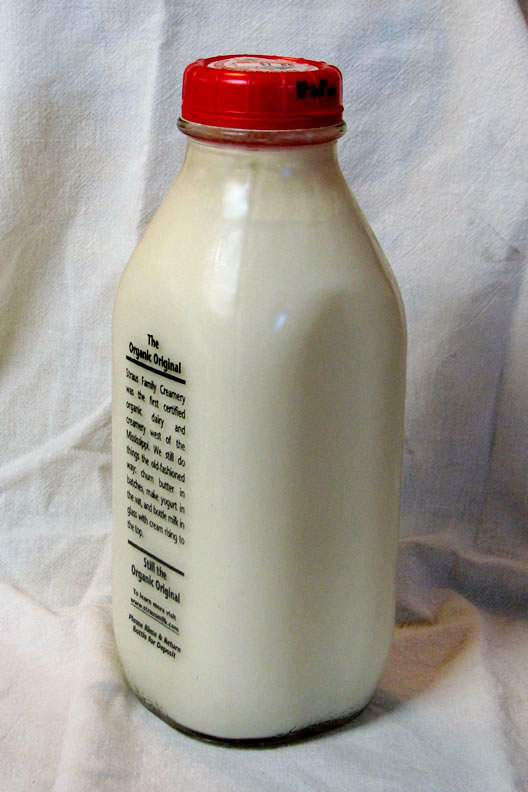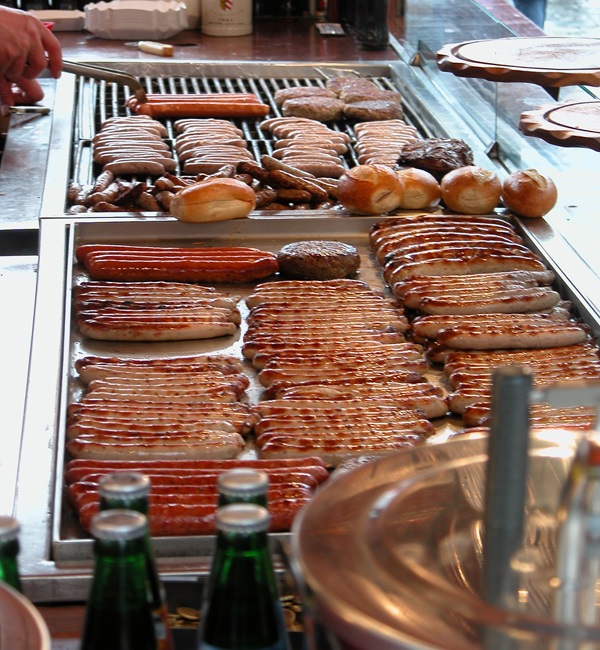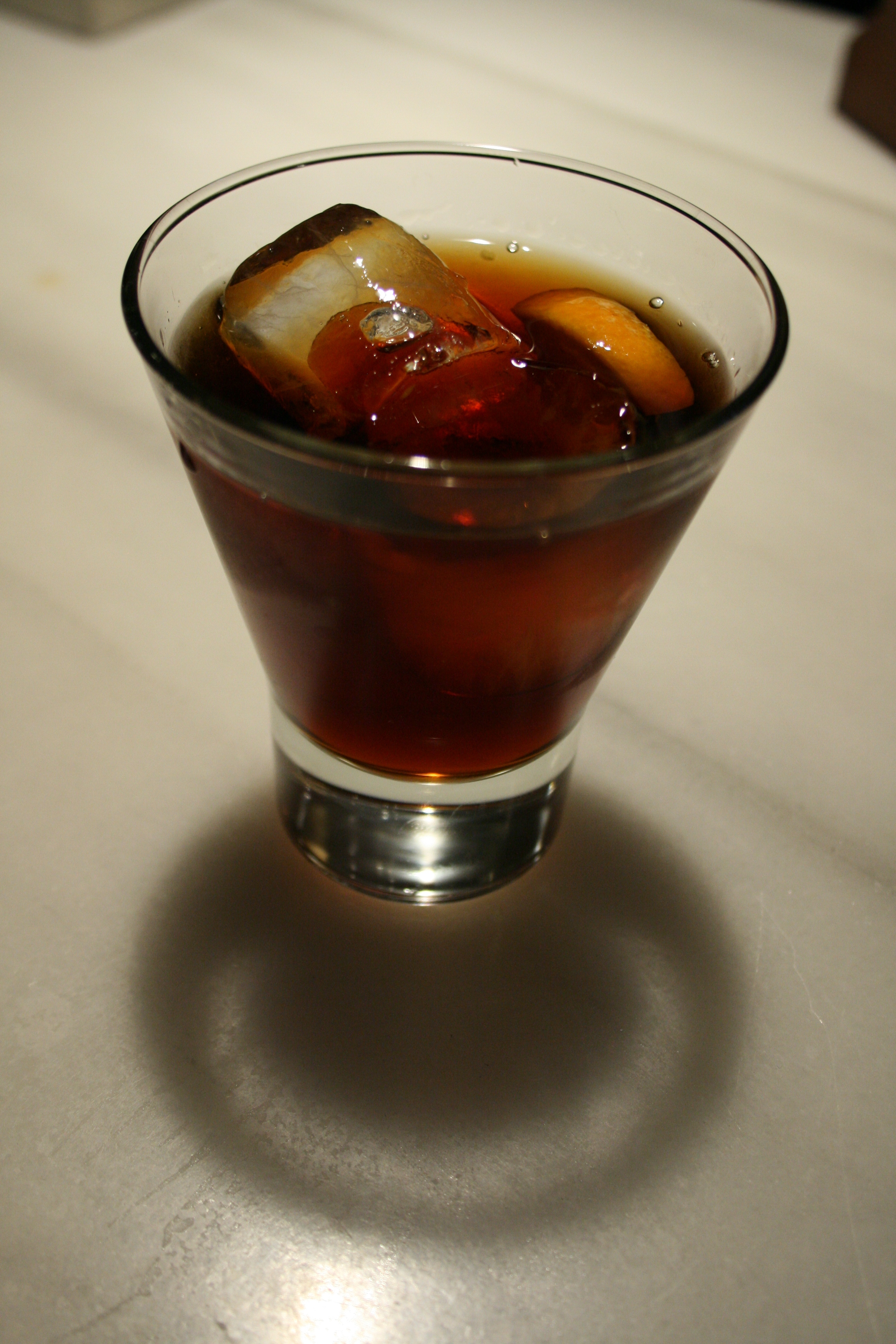|
Obatzda
Obatzda (also spelt Obazda and Obatzter) is a Bavarian cheese spread. It is prepared by mixing two thirds aged soft cheese, usually Camembert ( Romadur or similar cheeses may be used as well) and one third butter. Sweet or hot paprika powder, salt and pepper are the traditional seasonings, as well as a small amount of beer. An optional amount of onions, garlic, horseradish, cloves and ground or roasted caraway seeds may be used and some cream or cream cheese as well. The cheeses and spices are mixed together into a more or less smooth mass according to taste. It is usually eaten spread on bread or pretzels. ''Obatzda'' is a classic example of Bavarian ''biergarten'' food. A similar Austrian/ Hungarian/ Slovak recipe is called ''Liptauer'' which uses fresh curd cheese as a substitute for the soft cheeses and the butter, but uses about the same spice mix. In 2015, within the EU, obatzda was granted '' PGI'' certification. [...More Info...] [...Related Items...] OR: [Wikipedia] [Google] [Baidu] |
List Of German Cheeses
Cheeses have played a significant role in German cuisine, both historically and in contemporary times. Germany has by far the highest variety of cheeses worldwide with 9,500 cheeses coming from Germany. Cheeses are incorporated in the preparation of various dishes in German cuisine. Germany's cheese production comprises approximately one-third of the total for all European-produced cheeses. German cheeses A * Allgäuer Bergkäse – Prepared in Allgäu from unpasteurized cow's milk, it is ripened for a minimum of four months and has a smooth texture.Herbst, Sharon T.; Herbst, Ron (2010)''The Cheese Lover's Companion: The Ultimate A-to-Z Cheese Guide with More Than 1,000 Listings for Cheeses and Cheese-Related Terms'' HarperCollins. p. 60. * Altenburger Ziegenkäse – a soft cheese from cow's milk and goat's milk with caraway seeds in the cheese dough. The surface is covered with white Camembert mould. Because of its protected designation of origin, the cheese may only be p ... [...More Info...] [...Related Items...] OR: [Wikipedia] [Google] [Baidu] |
List Of Spreads
This is a list of spreads. A spread is a food that is literally spread, generally with a knife, onto food items such as bread or crackers. Spreads are added to food to enhance the flavor or texture of the food, which may be considered bland without it. Spreads * Aioli — sauce made of garlic, salt, and olive oil of the northwest Mediterranean * Ajvar — Southeast European condiment made from red bell peppers, eggplants, garlic and oil * Amlu – Moroccan spread of argan oil, almonds and honey * Apple butter - Caramelized, concentrated apple sauce * Bacon jam * Bean dip – sometimes used as a spread * Beer jam * Biber salçası — Anatolian paste made from red chili peppers or sweet long peppers and salt * Biscoff — Sweet paste made from Biscoff biscuits * Butter :* Rucava white butter :*Chocolate butter * Chutney — sauce of the Indian subcontinent of tomato relish, a ground peanut garnish or a yogurt, cucumber and mint dip * Cheong — various sweetene ... [...More Info...] [...Related Items...] OR: [Wikipedia] [Google] [Baidu] |
Fromage Fort
Fromage fort (literally "strong cheese") is a French cheese spread traditionally made by blending together pieces of different leftover cheeses, white wine (or other spirits), garlic, and various herbs. Other ingredients include pepper and leek broth. Aging is optional. Blue cheese, while one of the possible components, is usually included in small quantities, as its flavor is often stronger than other traditional ingredients. Cheeses used in ''fromage fort'' include: * Camembert * Brie * Swiss cheese * Parmigiano-Reggiano * Goat milk cheese Similar products Obatzda, from Germany is produced by blending cheeses, flavourings, butter, and beer. See also * List of spreads This is a list of spreads. A spread is a food that is literally spread, generally with a knife, onto food items such as bread or crackers. Spreads are added to food to enhance the flavor or texture of the food, which may be considered bland witho ... References {{Cheese-stub French cuisine Cheese di ... [...More Info...] [...Related Items...] OR: [Wikipedia] [Google] [Baidu] |
Liptauer
Liptauer is a spicy cheese spread from Slovakian, Austrian and Hungarian cuisine. Liptauer is made with sheep milk cheese, goat cheese, quark, or cottage cheese. Etymology The name is derived from the German name ''Liptau'' for the region of Liptov in northern Slovakia. Overview It is a part of the regional cuisines of Slovakia (as ''Šmirkás'', a form of the German ''Schmierkäse'' for cheese spread), Hungary (''körözött''), Austria (''Liptauer''), Slovenia (''liptaver''), Serbia (''urnebes salata'', "chaos salad"), Croatia, Albania (''liptao''), Italy (especially in the province of Trieste), and Romania (especially in Transylvania, where it typically goes by the Hungarian name, ''körözött''). The three main ingredients are spreadable white cheese like quark, chives and paprika. About one third of "traditional" Liptauer consists of bryndza, a sheep milk cheese. Other soft cheeses used include cottage cheese, quark and goat. These are mixed with sour c ... [...More Info...] [...Related Items...] OR: [Wikipedia] [Google] [Baidu] |
Beer Garden
A beer garden (German: ''Biergarten'') is an outdoor area in which beer and food are served, typically at shared tables shaded by trees. Beer gardens originated in Bavaria, of which Munich is the capital city, in the 19th century, and remain common in Southern Germany. They are usually attached to a brewery, beer hall, pub, or restaurant. History Facilities of this kind existed for example in Bamberg since 1605 under the German term "Bierkeller" ("Beer cellars"). At that time, the Archdiocese of Bamberg was directly subordinated to Rome and not yet to the Duchy of Bavaria. Hence, the first "Biergarten" in the strict sense of the term and of the decree of 1812 by the Kingdom of Bavaria developed at the beginning of 19th century in Munich. While it is unknown which brewery was first, it was likely one of Munich's big six: Löwenbräu, Hofbräuhaus, Augustinerbräu, Paulaner, Hacker-Pschorr and Spaten. Seasonal limitations on when beer could be brewed were already in ... [...More Info...] [...Related Items...] OR: [Wikipedia] [Google] [Baidu] |
Cream
Cream is a dairy product composed of the higher-fat layer skimmed from the top of milk before homogenization. In un-homogenized milk, the fat, which is less dense, eventually rises to the top. In the industrial production of cream, this process is accelerated by using centrifuges called "separators". In many countries, it is sold in several grades depending on the total butterfat content. It can be dried to a powder for shipment to distant markets, and contains high levels of saturated fat. Cream skimmed from milk may be called "sweet cream" to distinguish it from cream skimmed from whey, a by-product of cheese-making. Whey cream has a lower fat content and tastes more salty, tangy and "cheesy". In many countries partially fermented cream is also sold: sour cream, crème fraîche, and so on. Both forms have many culinary uses in both sweet and savoury dishes. Cream produced by cattle (particularly Jersey cattle) grazing on natural pasture often contains some carotenoid pi ... [...More Info...] [...Related Items...] OR: [Wikipedia] [Google] [Baidu] |
List Of Cheeses
This is a list of cheeses by place of origin. Cheese is a milk-based food that is produced in wide-ranging flavors, textures, and forms. Hundreds of types of cheese from various countries are produced. Their styles, textures and flavors depend on the origin of the milk (including the animal's diet), whether they have been pasteurized, the butterfat content, the bacteria and mold, the processing, and aging. Herbs, spices, or wood smoke may be used as flavoring agents. The yellow to red color of many cheeses, such as Red Leicester, is normally formed from adding annatto. While most current varieties of cheese may be traced to a particular locale, or culture, within a single country, some have a more diffuse origin, and cannot be considered to have originated in a particular place, but are associated with a whole region, such as queso blanco in Latin America. Cheese is an ancient food whose origins predate recorded history. There is no conclusive evidence indicating whe ... [...More Info...] [...Related Items...] OR: [Wikipedia] [Google] [Baidu] |
German Cuisine
The cuisine of Germany () is made up of many different local or regional cuisines, reflecting the country's federal history. Germany itself is part of the larger cultural region of Central Europe, sharing many culinary traditions with neighbouring countries such as Poland and the Czech Republic. Southern regions, like Bavaria and Swabia, share dishes with Austrian cuisine and parts of Swiss cuisine. The Michelin Guide of 2015 awarded a three-star ranking (the highest designation) to 11 restaurants in Germany, while 38 more received two-star rankings and 233 one-star rankings. , Germany had the fourth-highest number of Michelin three-star restaurants in the world, after Japan, France, and the United States. Hot foods Meat The average annual meat consumption is per person. The most common varieties are pork, poultry and beef. Other varieties of meat are widely available, but are considered to be insignificant. Source: Statista.com, 2017 Meat is usually braised; fried d ... [...More Info...] [...Related Items...] OR: [Wikipedia] [Google] [Baidu] |
Protected Geographical Indication
Three European Union schemes of geographical indications and Traditional food, traditional specialties, known as protected designation of origin (PDO), protected geographical indication (PGI), and traditional specialities guaranteed (TSG), promote and protect names of agricultural products and foodstuffs. Products registered under one of the three schemes may be marked with the logo for that scheme to help identify those products. The schemes are based on the legal framework provided by the EU Regulation No 1151/2012 of the European Parliament and of the Council of 21 November 2012 on quality schemes for agricultural products and foodstuffs. This regulation applies within the EU as well as in Northern Ireland. Protection of the registered products is gradually expanded internationally via bilateral agreements between the EU and non-EU countries. It ensures that only products genuinely originating in that region are allowed to be identified as such in commerce. The legislation fi ... [...More Info...] [...Related Items...] OR: [Wikipedia] [Google] [Baidu] |
Curd
Curd is obtained by coagulating milk in a sequential process called curdling. It can be a final dairy product or the first stage in cheesemaking. The coagulation can be caused by adding rennet or any edible acidic substance such as lemon juice or vinegar, and then allowing it to coagulate. The increased acidity causes the milk proteins ( casein) to tangle into solid masses, or ''curds''. Milk that has been left to sour ( raw milk alone or pasteurized milk with added lactic acid bacteria) will also naturally produce curds, and sour milk cheeses are produced this way. Producing cheese curds is one of the first steps in cheesemaking; the curds are pressed and drained to varying amounts for different styles of cheese and different secondary agents (molds for blue cheeses, etc.) are introduced before the desired aging finishes the cheese. The remaining liquid, which contains only whey proteins, is the whey. In cow's milk, 90 percent of the proteins are caseins. Curds ca ... [...More Info...] [...Related Items...] OR: [Wikipedia] [Google] [Baidu] |
Slovakia
Slovakia (; sk, Slovensko ), officially the Slovak Republic ( sk, Slovenská republika, links=no ), is a landlocked country in Central Europe. It is bordered by Poland to the north, Ukraine to the east, Hungary to the south, Austria to the southwest, and the Czech Republic to the northwest. Slovakia's mostly mountainous territory spans about , with a population of over 5.4 million. The capital and largest city is Bratislava, while the second largest city is Košice. The Slavs arrived in the territory of present-day Slovakia in the fifth and sixth centuries. In the seventh century, they played a significant role in the creation of Samo's Empire. In the ninth century, they established the Principality of Nitra, which was later conquered by the Principality of Moravia to establish Great Moravia. In the 10th century, after the dissolution of Great Moravia, the territory was integrated into the Principality of Hungary, which then became the Kingdom of Hungary in 1000. In 124 ... [...More Info...] [...Related Items...] OR: [Wikipedia] [Google] [Baidu] |










.jpg)
